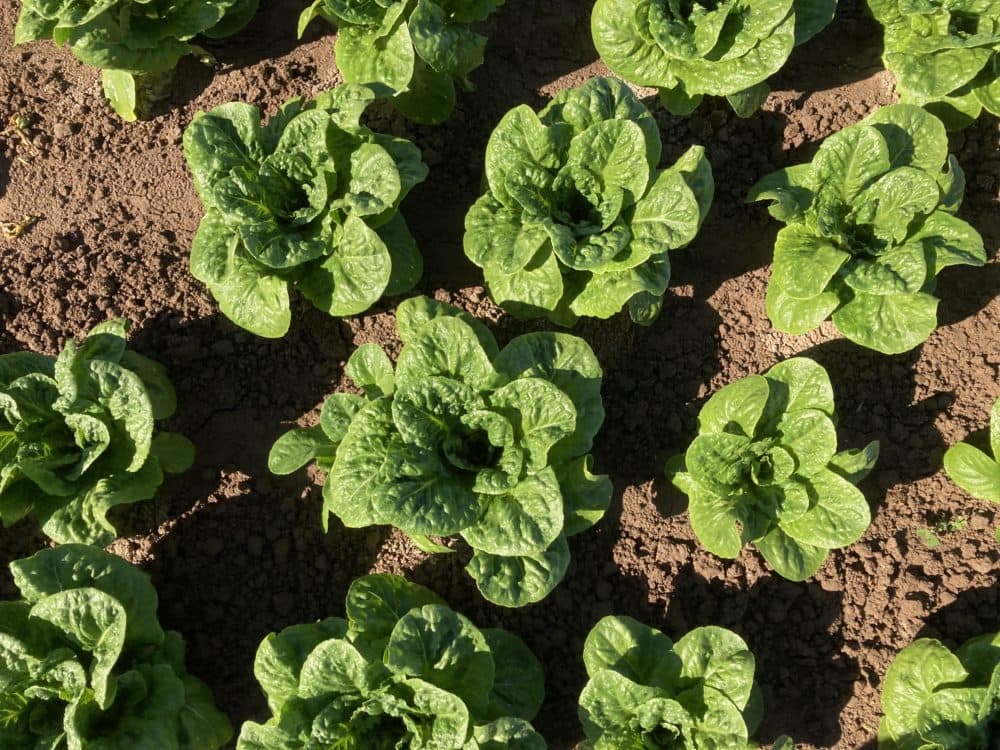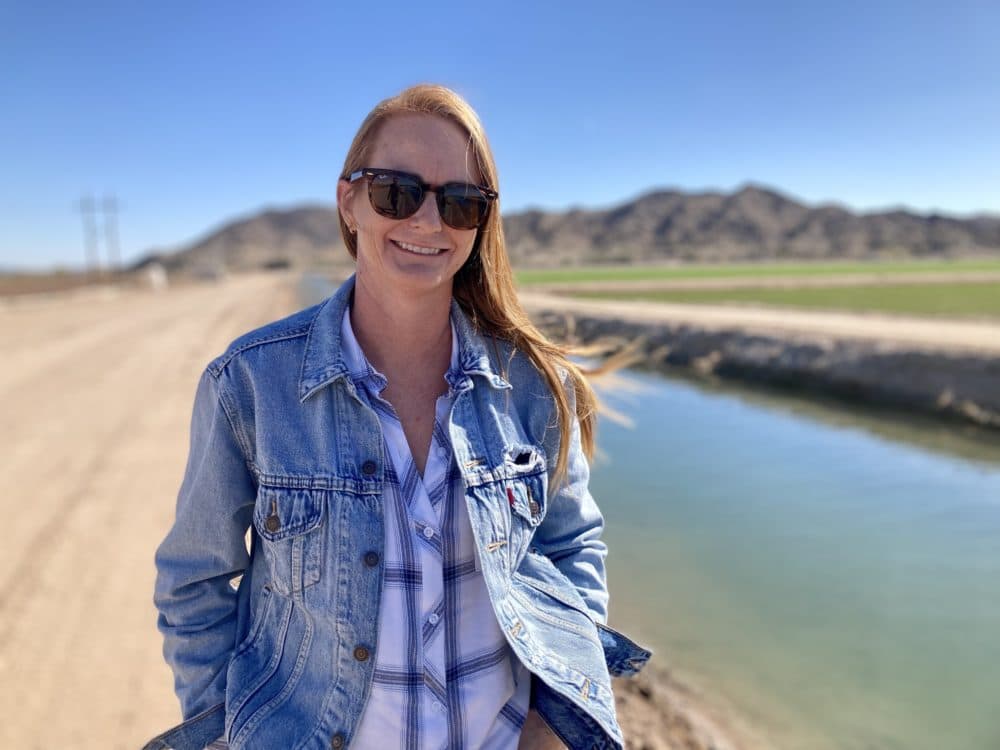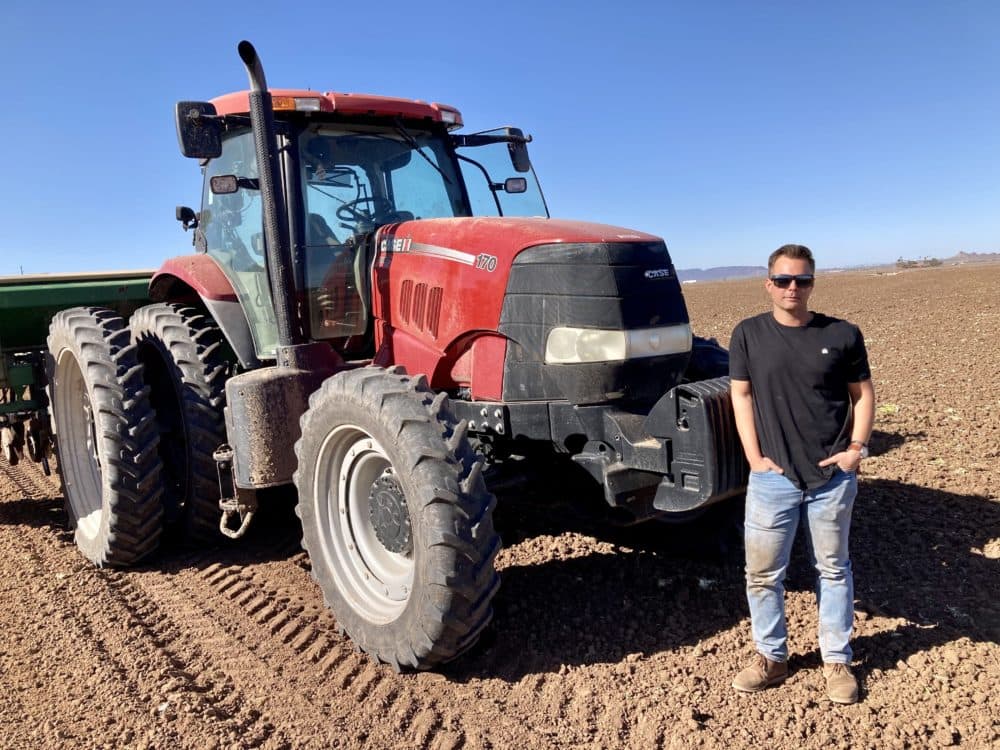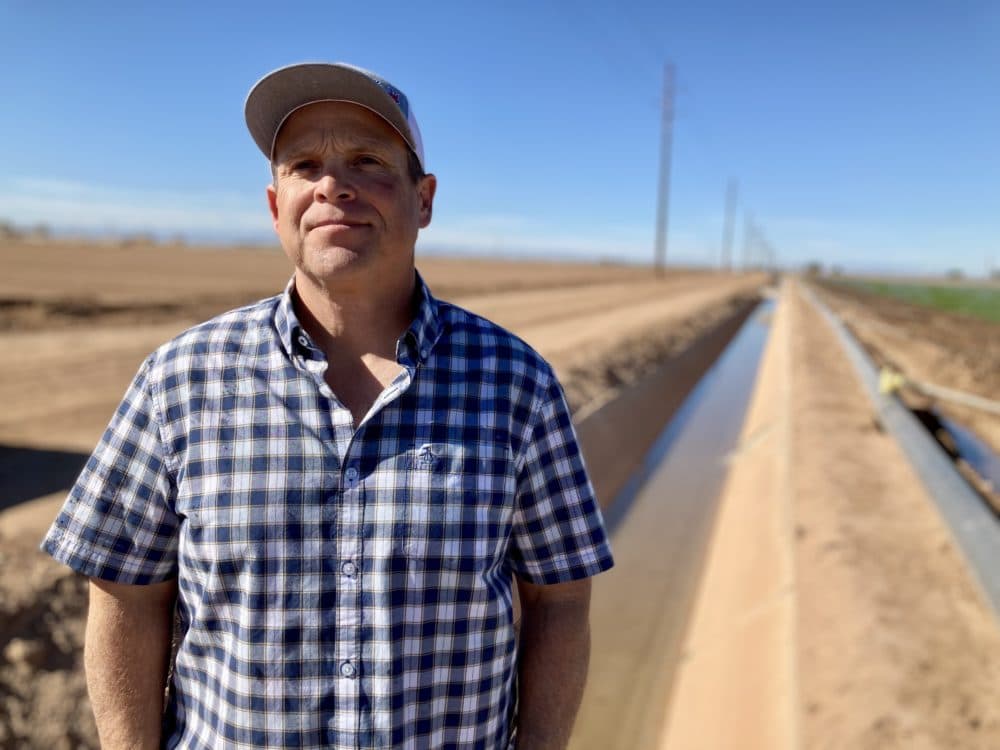Advertisement
With everything on the line, Arizona and California farmers prepare for fight over Colorado River
Play
With the Colorado River teetering on the brink of disaster, farmers who rely on its life-giving water are preparing to make significant cuts to their operations.
Near the U.S.-Mexico border, fourth-generation farmer Amanda Brooks grows broccoli, lettuce, dates, citrus and alfalfa on 6,000 acres. Her family’s farm in Yuma, Arizona, nearly touches the banks of the troubled river.

The river is “everything to what we do,” Brooks said. “We couldn't grow any of the crops without it.”
Last year, a top government official warned Congress the river was running dangerously low. Speaking before a Senate committee, Bureau of Reclamation Commissioner Camille Touton said the seven Colorado River Basin would need to make drastic cuts to their water use to keep the reservoirs stable.
“The challenges we are seeing today are unlike anything we have seen in our history,” Touton said.
The crisis on the river is fueled by climate change and a growing population in the West, which has led to too many people using too much water. About 75% of the river goes to agriculture. And farmer Amanda Brooks knows the brunt of the looming cuts could land on farms like hers.
“Not everybody's getting along,” she said. “Not everybody is agreeing about what that solution is. It's scary.”
Brooks is referring to tension that’s building up between the seven basin states.
Last month, six of them sent the federal government a proposal that laid out a plan for sweeping system-wide cuts. But the state that uses the largest share of the river didn't sign it. California came up with its own plan.
Without an agreed-upon solution, the reservoirs will keep dropping, and hydrologists say the river could stop flowing past the dam at Lake Mead within two years. That scenario is called deadpool.
Considering the stakes, Brooks says Yuma farmers are saving everywhere they can.
All of her fields have been leveled with lasers to reduce runoff down to zero. She also works with a coalition of local irrigation districts that offered to let some fields go dry.
Their plan, called “Save the River,” asked the government to pay farmers $1,500 for every acre foot of water they didn't use.
“In general, I think the perception was we were being greedy,” said Brooks, describing a plan that hasn’t been accepted. “But if you know Yuma and the crops we grow, you know that was not enough to make us whole.”
‘Extreme Shock’ to farms
If farmers don’t know what’s coming, neither do economists. About a decade ago, George Frisvold at the University of Arizona, ran a model trying to understand what would happen to farmers in the event of an unthinkable shortage on the river.
When he and a colleague slashed the region’s water allocation by 2.5 million acre feet, many of the vegetable farmers in Yuma and neighboring Imperial County, California, made out just fine.
“Veggie production is going to be the last thing affected because that’s the most profitable thing,” Frizvold said.
Not true for other crops. Frizvold’s model showed that losing that much water would wipe out less valuable crops like alfalfa, cotton and wheat. But the study had a blindspot: It didn’t model a scenario beyond 2.5 million acre feet. At the time, Frizvold said losing that much water would have been considered an “extreme shock.”
What seemed unimaginable a decade ago is now essentially inevitable. The Bureau of Reclamation says states must save two to four million acre feet of water to keep the river from crashing.
That’s about 3 million football fields, covered with a foot of water.
“We are in uncharted territory,” Frizvold said.
‘If there’s no water, you have a right to nothing’
Yuma Farmer Kirk Dunn is aware of the threat. He grows those lower value crops that Frizvold warns about. On a recent sunny February day, he’s squeezed inside the cab of his tractor planting a different type of wheat that requires less water.
It's an experiment.
He hopes to cut his irrigation by 20% without affecting the harvest. “We are doing as best we can to prove that before we need to do it,” he said.

In the meantime, Dunn is frustrated with his neighbors. Just a few miles from here, farmers in California have senior water rights. That means that in times of shortage and drought on the river, Arizona suffers first. Cities like Phoenix and Tucson — and many of the state's farms — lose all their river water before California loses any.
Arizona agreed to the deal in the 1960s to secure funding for the Central Arizona Project, a vast system of canals that brought Colorado River water to the central part of the state. It’s part of a legal framework that people often call “the law of the river.”
“As much as California and other states like to rely on the law of the river and their historic compacts and water rights — all of those are going to go out the window pretty soon because if there's no water, you have a right to nothing,” Dunn said.
A showdown between Arizona and California
This tension between states has set the stage for a fight. Just across the river from Arizona the town of Holtville, California, calls itself the Carrot Capital of the world.
Every February, the town throws a parade in honor of its treasured vegetable.

“It's not an easy time to be a farmer," said parade goer Mike Webb, who grew up in the area and works on a local farm. Despite the state's enviable water rights, he said the fear of running out is real. “You think you're secure but there's only so much to go around.”
The farms in Holtville and neighboring towns get their water from the Imperial Irrigation District, which serves about half a million acres in California's Imperial Valley.
IID is the largest single water user on the river, entitled to 10 times more water than the entire state of Nevada.
The district supported California’s decision not to join the six other basin states’ plan that laid out future cuts, according to IID manager Tina Shields. She said their proposal ignores the priority system laid out in the law of the river. Their plan accounts for downstream evaporation, which would end up leaving California with most of the cuts.
“A deal’s a deal,” she said. “We don’t just stop honoring existing compacts, laws and legislation just because times are a little tough and folks didn’t realize they’d be impacted.”
Shields and other Imperial Valley farmers say they are willing to make some sacrifices. As part of a deal with the federal government to solve the environmental disaster at the nearby Salton Sea , IID agreed to voluntarily conserve 250,000 acre feet of water this year. But the district is unwilling to do more unless other states step up first, Shields said.
For farmers like Jack Vessey, whose family has been growing vegetables around Holtville for generations, there is no backup plan. He said if the river stops flowing past Lake Mead, “this area will dry up and be a desert once again. It would be a ghost town here.”

But the truth is that farmers in Arizona and in California both believe their livelihoods are at risk, which is why finding a solution has become increasingly difficult. At this point, many water experts expect the federal government will have to intervene and order the states to make cuts before the reservoirs reach the dead pool.
Any plan that deviates from the status quo is likely to end up in court. The process takes years to resolve while the reservoirs drop further, said Wade Nobel, an attorney in Yuma who represents local irrigation districts.
“The situation is very tight,” he added. “In a water war, things are going to get ugly. They have been ugly for a while, but it’s going to get worse.”
This segment aired on February 23, 2023.
